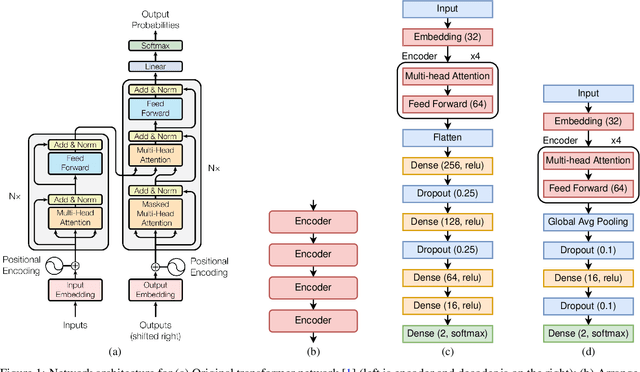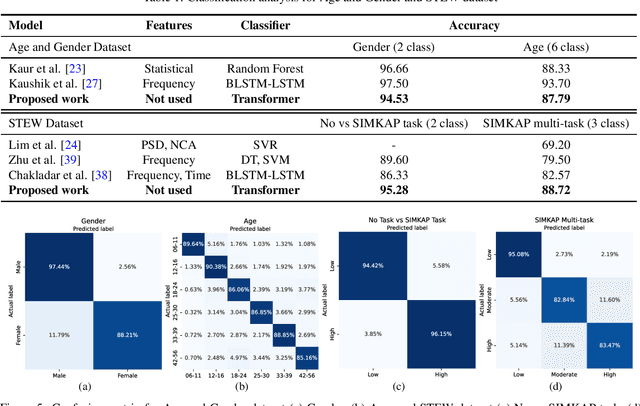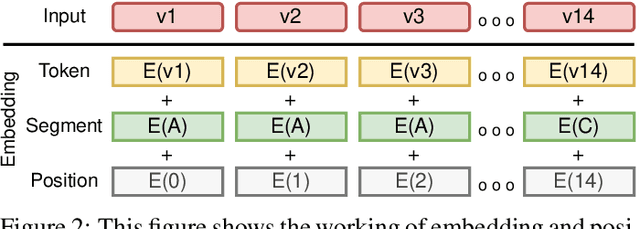Gourav Siddhad
Efficacy of Transformer Networks for Classification of Raw EEG Data
Feb 08, 2022



Abstract:With the unprecedented success of transformer networks in natural language processing (NLP), recently, they have been successfully adapted to areas like computer vision, generative adversarial networks (GAN), and reinforcement learning. Classifying electroencephalogram (EEG) data has been challenging and researchers have been overly dependent on pre-processing and hand-crafted feature extraction. Despite having achieved automated feature extraction in several other domains, deep learning has not yet been accomplished for EEG. In this paper, the efficacy of the transformer network for the classification of raw EEG data (cleaned and pre-processed) is explored. The performance of transformer networks was evaluated on a local (age and gender data) and a public dataset (STEW). First, a classifier using a transformer network is built to classify the age and gender of a person with raw resting-state EEG data. Second, the classifier is tuned for mental workload classification with open access raw multi-tasking mental workload EEG data (STEW). The network achieves an accuracy comparable to state-of-the-art accuracy on both the local (Age and Gender dataset; 94.53% (gender) and 87.79% (age)) and the public (STEW dataset; 95.28% (two workload levels) and 88.72% (three workload levels)) dataset. The accuracy values have been achieved using raw EEG data without feature extraction. Results indicate that the transformer-based deep learning models can successfully abate the need for heavy feature-extraction of EEG data for successful classification.
 Add to Chrome
Add to Chrome Add to Firefox
Add to Firefox Add to Edge
Add to Edge